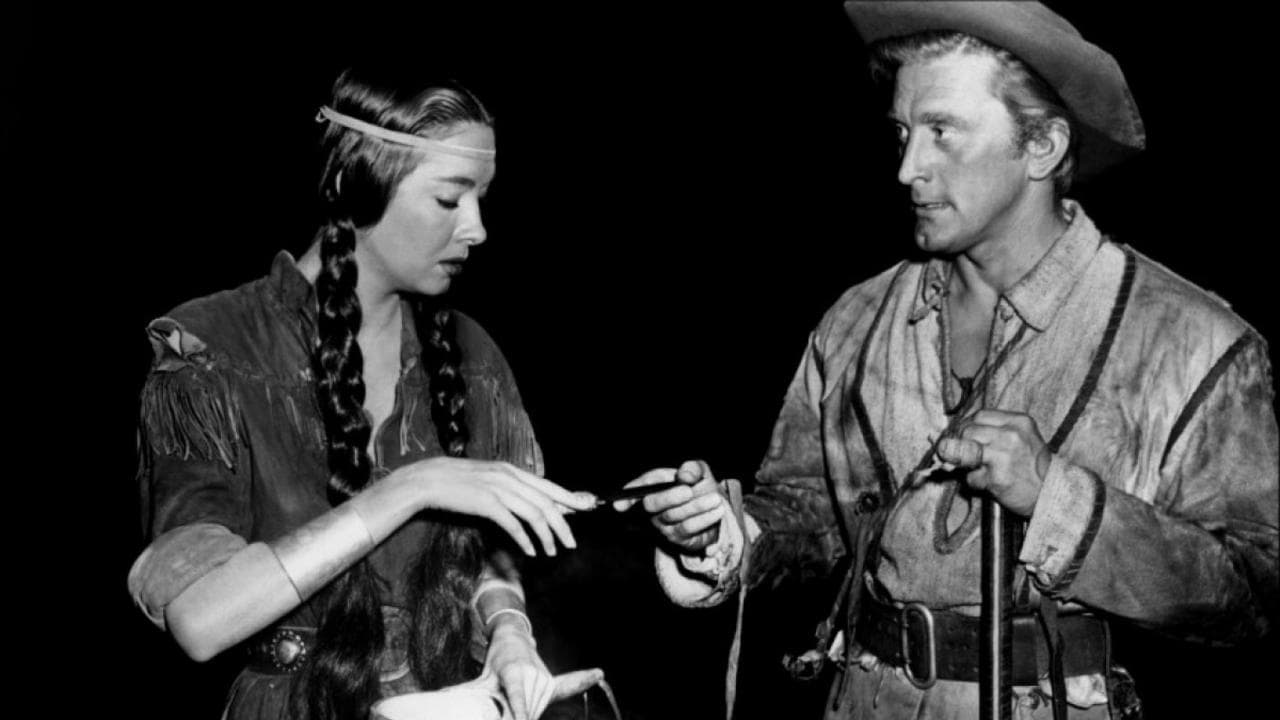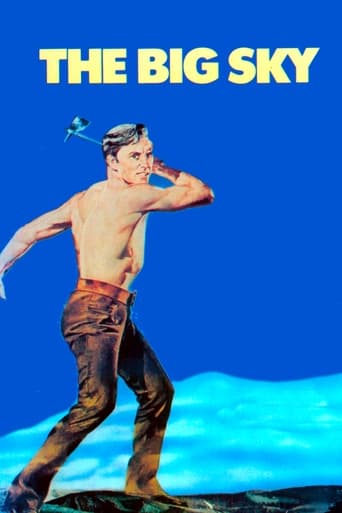

I love this film--it makes me feel good every time I watch it. I'd seen it when I was a child, and loved it then. However, for decades later, I confused it with The Far Horizons which was released a few years later. Could there be two upriver boat adventures involving a pair of heroes and one Indian princess? Sure enough.The film may not be faithful to Guthrie's novel, but there were too many unmarketable items, such as having heroes with dark sides, and a generally "down" ending. Rape, murder, and racial hatred are not usually found light-hearted adventures. A film with serious characters who experience adult problems is not something that could be sold to kids, such as myself when I first saw the film. For example, I saw The Searchers when I was a kid, and was clueless. I vastly preferred The Big Sky. More fun.So if you take the book and subtract the adult themes and plot elements, you are left with a film that was hugely entertaining to kids, as well as to any adult looking for pure escapism.
... View MoreThere are elements to this movie which are classic. The obvious location shooting shows up in a lot of scenes which enhances the experience even though the film is black and white. The actors carry the film as it tells several stories in the characters and has a lot of social interaction. This is one of the very few Western films made where fighting Indians is not the central theme.What tends to make it lack classic status is the fact the film really has not been preserved very well judging from the TCM showing I have been watching. There are some scenes and dialogs which are much rougher than the original film was. What really shows up in this film is the lack of money RKO had for pictures at this point.This top notch cast and great director do a great job putting something very watchable on film but the budget for the film is obviously very thin as you can tell watching the film. Kirk Douglas account addresses this as he mentions loving doing this movie in spite of spending more than 2 weeks tent camping.The lack of money for a long feature contributes to the fact this one was shot in black and white in an era where color had taken over for films like this. RKO cut an extra 20 minutes off the film, because they were out of money and afraid that the longer movie would be so long it would not sell tickets.Still, because of the locations and acting, this movie commands attention from viewers. It is a shame it was made on a shoe string which shows very obviously in the finished product.
... View MoreIf ever a sprawling tale about an expedition up the Missouri river to trade furs begged for Technicolor photography, THE BIG SKY is it. Based on the novel by A.B. Guthrie, it has KIRK DOUGLAS in the lead as the head of the expedition but most of the footage belongs to young DEWEY MARTIN in his first big screen role. Why he never managed to become a more important player in Hollywood remains a mystery to me.Unfortunately, Dudley Nichols' screenplay is rather episodic and there are many points toward the end of the film where it seems the story is about to end and then there are further scenes. I found none of the narration objectionable (as others here seem to imply), but the structure of the screenplay is awkwardly handled, especially toward the latter part of the film.Another minus point, the night scenes in the woods look as though they were photographed in a studio and not on location which minimizes the sense of danger from Indians and other trappers that the story requires. But most of the exterior daylight scenes are photographed in crisp B&W photography in real outdoor settings which tend to jar against the studio-lit scenes, making them more noticeable.There's plenty of male camaraderie and friendship among the trappers and colorful incidents involving the Indians, so if this kind of western is your thing you'll undoubtedly find it interesting. I watched the 140 minute version on TCM and it was slow going at times.Summing up: Biggest drawback: should definitely have been filmed in breathtaking Technicolor.
... View MoreWhile not exactly a "Western" film (actually more of an "Americana" movie, it has been one of my favorites since I saw it during its original theatrical release. It is one of those rare films in which everything comes together perfectly. The actors, the story, the scenery, the photography, the music...everything as it should always be (but seldom is) in a film experience. If it has one flaw, it is that it wasn't longer. I enjoyed it so much that I ran out & bought the novel. I wish I hadn't though, as Dewey Martin's character in the book was an evil, murdering psychopath who killed Jim Deakins & his wife & damn near everyone else he ever met. A case of the movie being 100 times better than the novel.
... View More